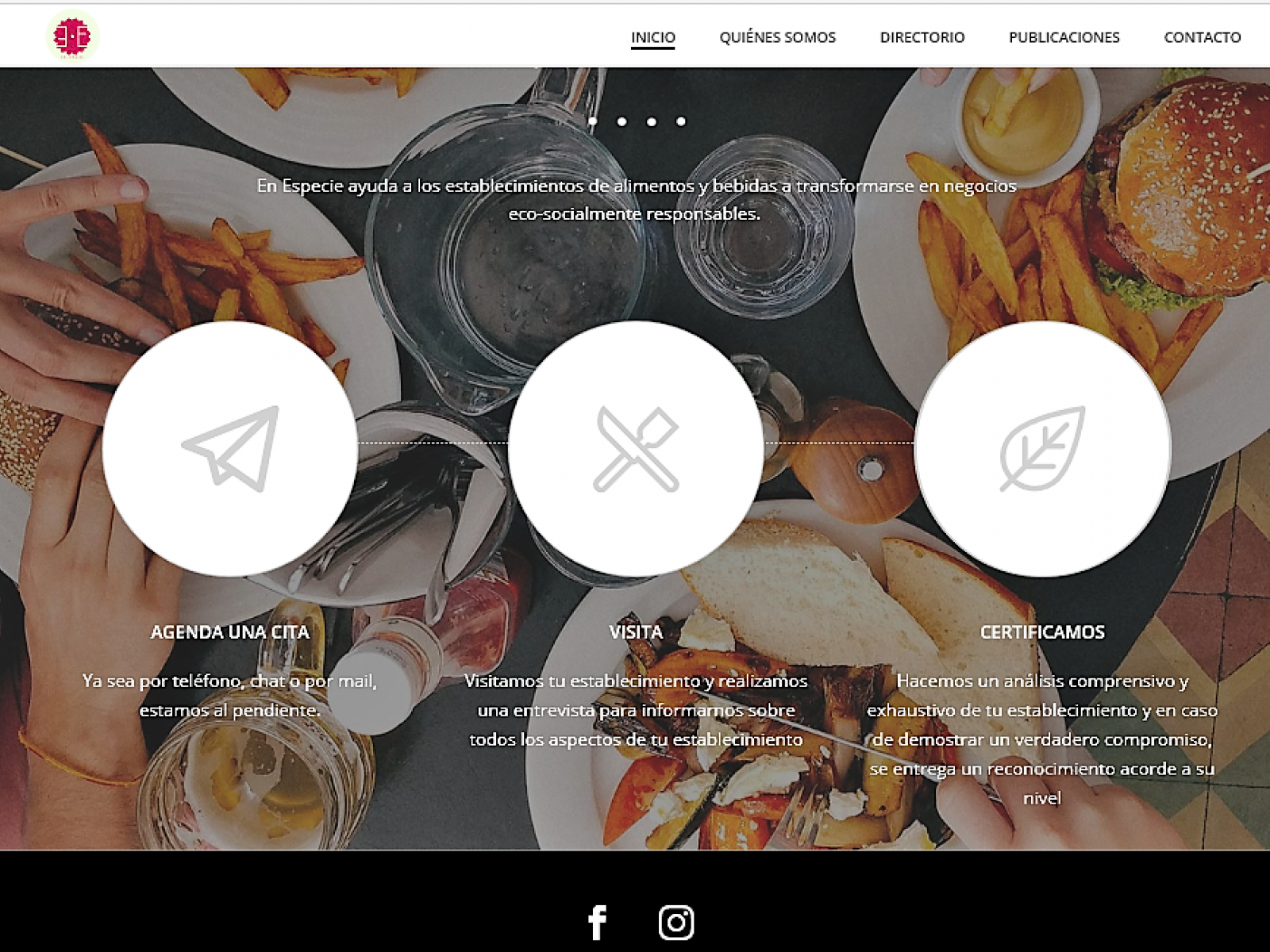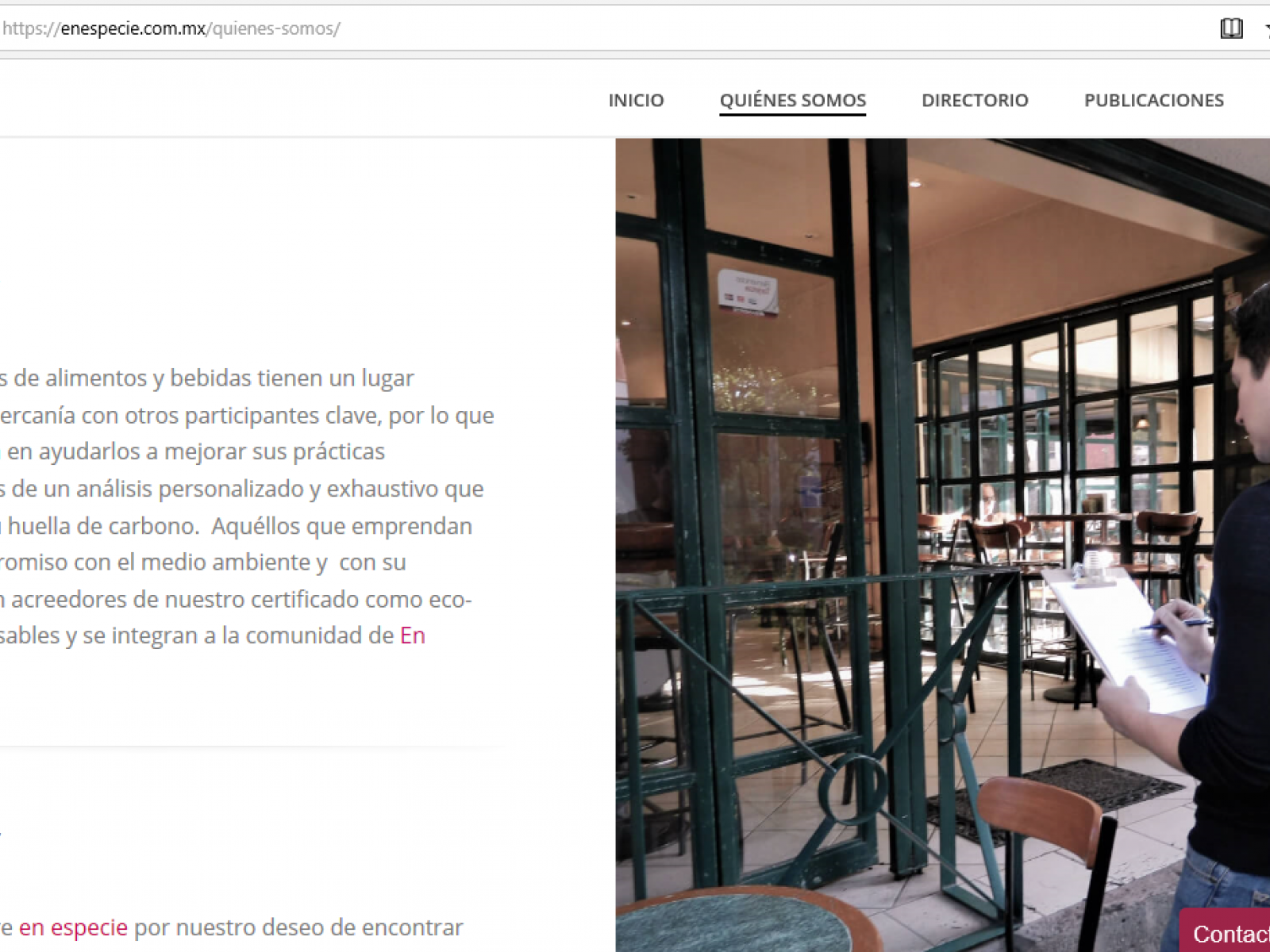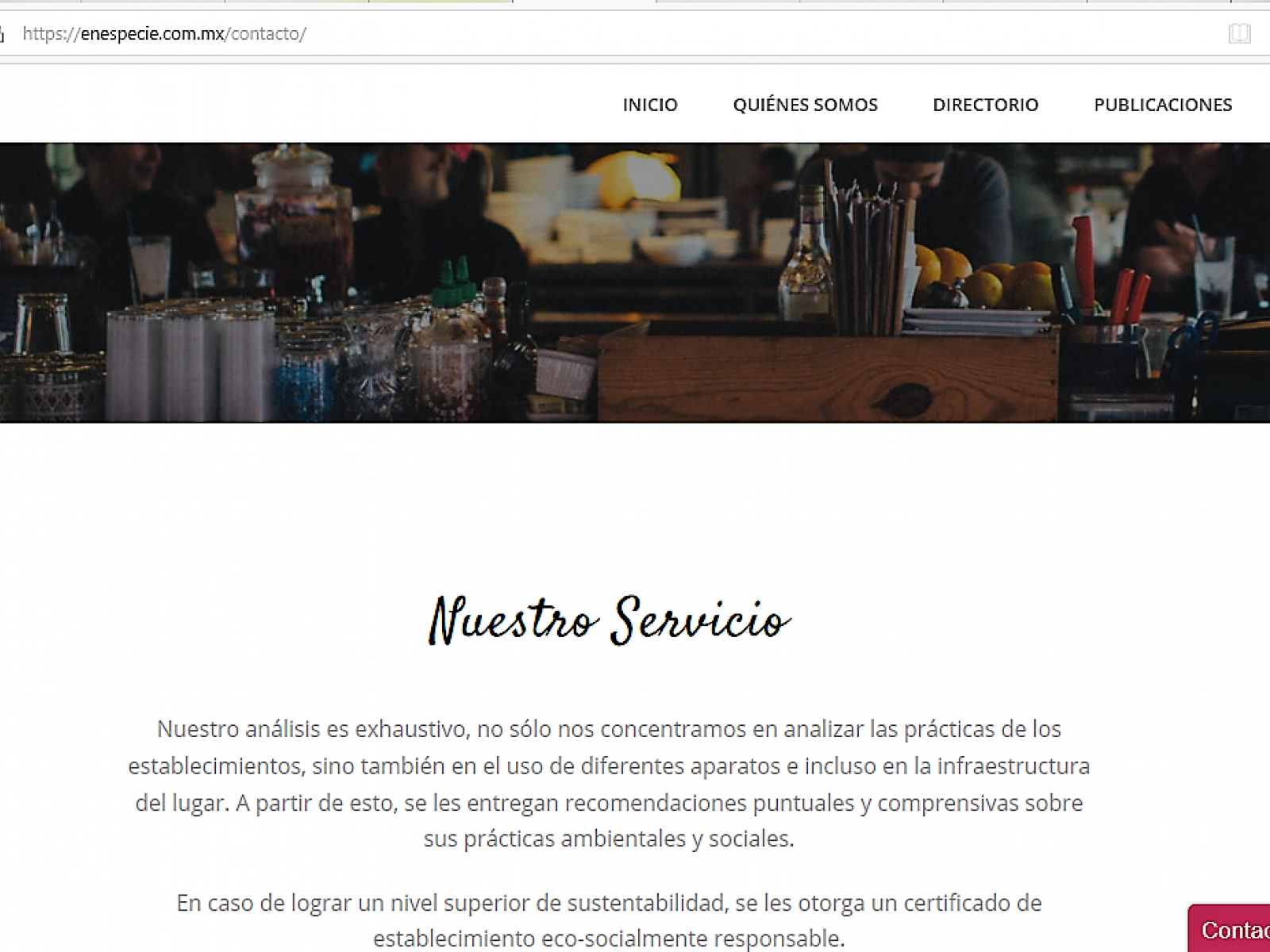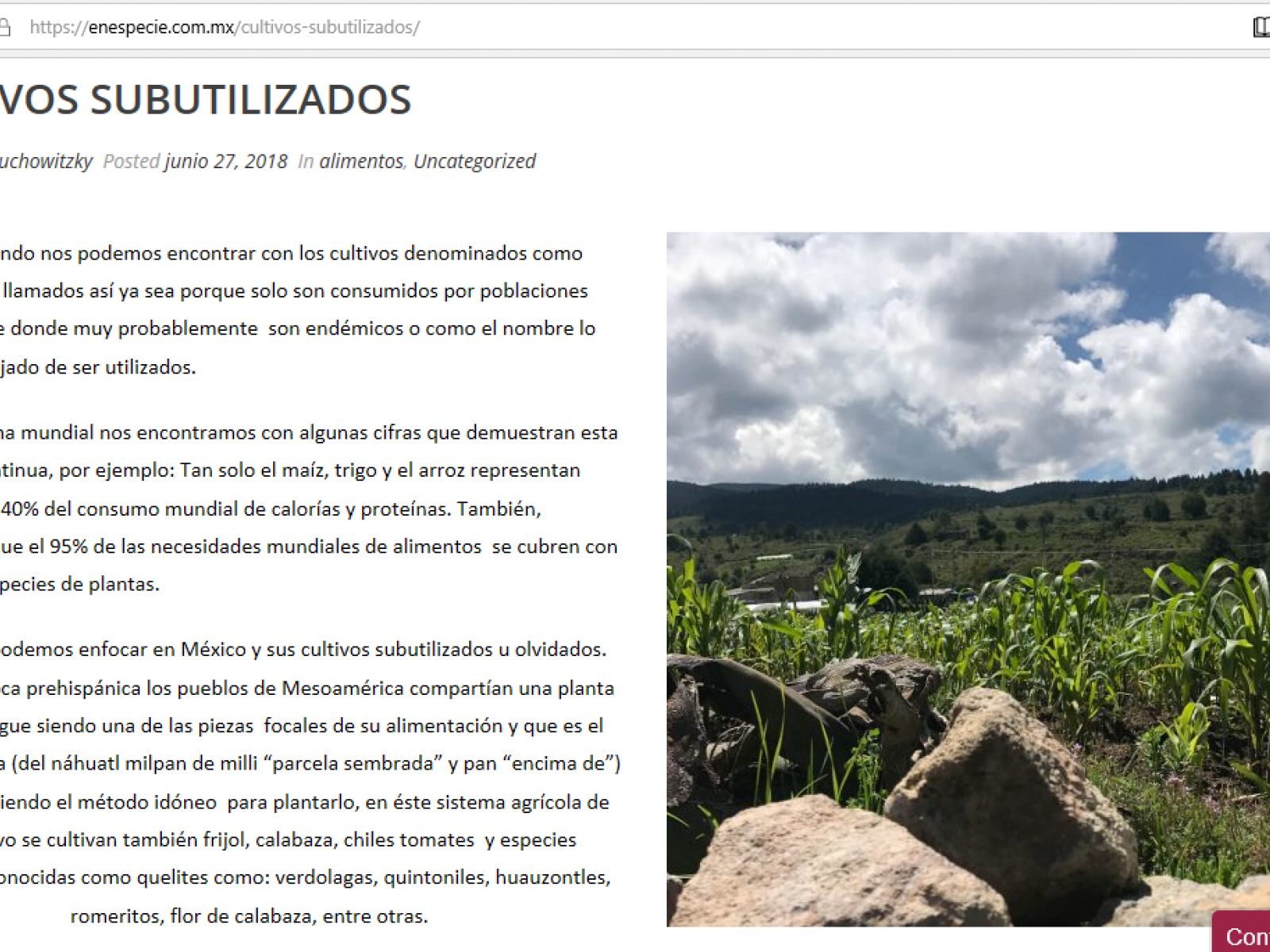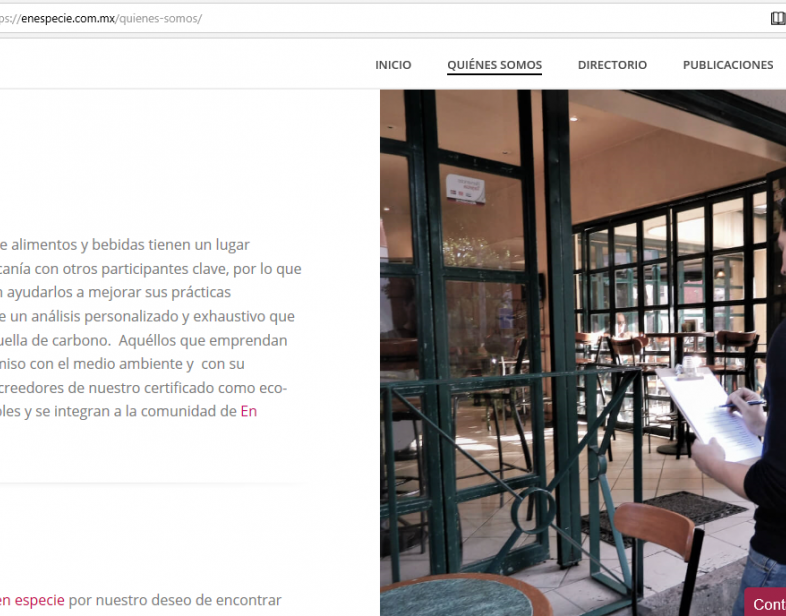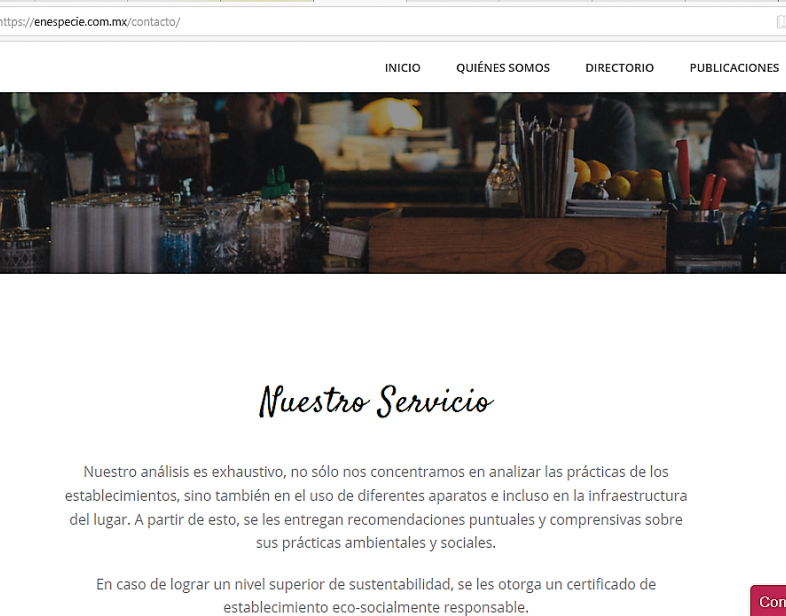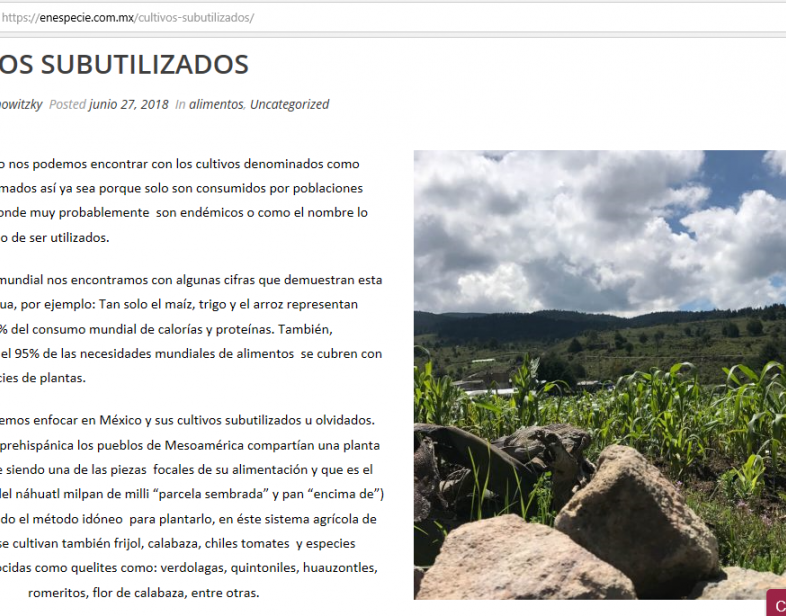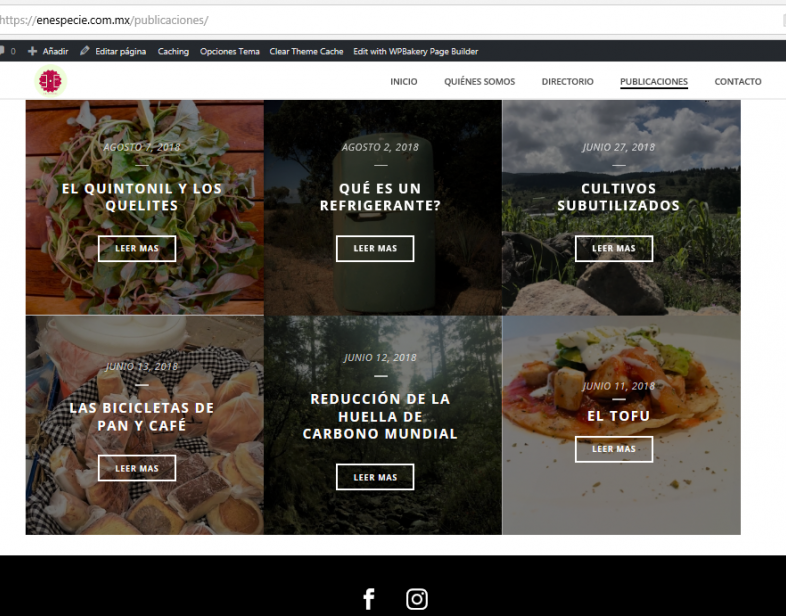An Overview Of Our Solution
The food industry is one of the main contributors to the climate change. Solutions focused in the agricultural level are almost impossible in an urban landscape. However, a behavioural change can be achieved through food businesses and consumers in big cities by reducing our consumption of an animal based products, food waste and use of disposable items, as well as taking advantage of the progress of technology.
In light of this problem, En Especie works in favour of helping food businesses in Mexico city into taking the necessary changes in order to protect the environmental and also to promote the conscientiousness among its clientela. Through a personalized evaluation we make precise recommendations to every business that acquires our services and include them in programs that also help the protection of the environment.
- Population Impacted: Potentially 226, 367 people
- Continent: North America
Last name
Organization type
Context Analysis
Mexico occupies the 9th place worldwide in the highest carbon footprints, according to the Global Footprint Network. It must be recognized that in Mexico this problem is twofold, since there is not an environmental education among the citizens nor from its government and on the other hand, there is not enough data for building such a conscientiousness.
As it is well known, the food industry has one of the highest carbon footprint and thus, around the world there are initiatives to reduce its harm to the environment. Nonetheless, most mexicans are unaware of the harm that our consumption and wasteful habits causes, consumers and business man likewise. And therefore, very few people are making the necessary changes in order to stop or delay the climate change.
However, a behavioural change can be achieved through food businesses and consumers, since it is estimated by Nielsen company that 40% of mexicans eat at food businesses at least once a week.
Describe the technical solution you wanted the target audience to adopt
From the perspective of our two target audiences:
From a direct perspective, we want to educate owners of all sorts of food business into taking the necessary changes in order to protect the environmental and also to promote the conscientiousness among its clientela. While some of our recommendations to business are simple cognitive behavioural changes, others include the investment in green technology. In this reasoning, a rational business man agrees to this sort of measure in favour of the environment because of the gains in efficiency, the cost reductions and the benefit from gaining promotion as a green and responsible business, which we guarantee.
Indirectly, we create incentives for the consumers through the businesses in order to obtain behavioural changes. Our solution is based in a rational decision making model, in which clientela starts taking care of the environment due to the social incentives.
Type of intervention
Describe your behavioral intervention
From the perspective of the business, we want to avoid wasteful investment of resources in their operation, stop the use of technology that has proven to be very harmful for the environment, while they reduce its costs. Additionally, we concentrate our efforts in building a community between all of these food business, so that they work together in favour of the environment. Once they are part of our network, they can be included in different programs that also help the protection of the environment.
For example, we use the experience of other green initiatives, such as a German program in which rather than expecting its residents to bring their own reusable cup, they created a hard plastic to-go cup that customers can obtain with a deposit and return to any one of the participating businesses.
All of these can only be accomplished by an active and strong network. Therefore, we also work hard so that they get exceedingly good advertisement for taking up these green measures. In this sense, we build a positive image among consumers, so that they prefer to attend to this kind of businesses for its green consciousness.
Consequently, the advertisement works as an incentive for businesses to join our network and also as an educational campaign for the public so that they demand business to have better environmental practices.
As needed, please explain the type of intervention in more detail
Indirectly, our intervention also comprehends consumers. Mainly, by promoting certain behavioural change, such as the decrease of red meat consumption and food to go in disposable dishes, increase in the use of green transports, reduction of food waste and the use of technology in favor of the environment. For this purpose, we concentrate in educational campaigns in social media, creating incentives inside restaurants or cafeterias that promote this kind of behaviour (for example, by showing the exact portions of a dish, consumers have the possibility to assess whether they can finish a whole dish and reduce its food waste) and visual aids that demonstrate the impact of the changes that a business is making (for example a plate that shows how much water consumption is reduce by changing the kind of urinal).
Describe your implementation
We help food businesses to improve in: reduction of consumption of water, electricity and gas, decrease in the use of products that have a high carbon footprint (disposables, cleaning products, administration materials), substitution of technology that has proven to be harmful, benefit from recycling, correct management of their waste and garbage, substitution of suppliers (local are preferable to transnational chains), apart from helping creating incentives for consumers to modify certain behaviours. Through a personalized evaluation of our team of chefs, environmental engineers and legal experts, we make precise recommendations to every business that acquires our services, taking into account its special conditions. If they reach a reasonable improvement in our criteria, we certified them as ecological and social responsible business. Once a business is certified, we make sure to have surprise evaluation and a formal reevaluation every 9 months.
Likewise we take advantage of the strong and active network created to put into motion programs in favour of the environment. For the example, the German program explained above; or the program that collects fresh food that is un-sellable, and distributes it to community organizations that serve those in need; or the organization of donations during catastrophes, such as earthquakes or floods.
Since, there is not a real environmental education in Mexico, some business are reluctant to be part of these kind of projects. However, through our team we focus in showing the owners the advantages in cost reduction and the positive advertisement that it receives.
The evaluation of impact in consumers is relatively more difficult, since we do not work directly with them. However, food businesses have a privileged place to influence consumption tendencies from their clientela. In consequence, they help us collect data from consumers polls where we can measure the impact that our network is having among them.
External connections
In our project, every business of our network has a very important role, since they are a target audience and at the same time they are our partners in modifying the behaviour of their clientela.
On the other hand, we have certain alliances with suppliers of different products: solar panels, local producers with sustainable practices of different foods, disposables producers that are biodegradable or reusable, among others. It is very important for us to have these alliances, due to the fact that we need a list of suppliers to make recommendations to the businesses of our network.
In addition, we have other organizations as collaborators, especially those focused in education or those who focused in helping people in need; as well as food banks and shelters that receive donations in species.
In spite that our efforts are focused in modifying behaviours of the different actors of the food industry, the truth is that our project has the potential to connect with other sectors, since:
a) consumers poll and the food businesses inventories give us access to data that is not available in Mexico.
b) the promotion given to local producers will have an impact on the growth of certain local communities.
c) the legal experts in our team have the ambition of using this project as a base for strategic litigation and policy making in the ecological field (mainly for Mexico city and maybe later for the whole country).
Who adopted the desired behaviors and to what degree?
Since we are in the first stage of our implementation of the project, we do not have a lot of experimental evidence of the impact of the project. To really assess the extent of the behavioural change, it is necessary that more time elapses in order to compare and contrast the starting point of different businesses and the consequent evaluations.
However, it is possible to give an example of the kind of changes that the businesses of our network are making. In this regard, “Cocina de sastre” is one of the best case study, since it was the first restaurant to obtain the certificate.
In that case, the owner made important changes such as: installation of flow rate of non-fill prep sinks ≤ 1.5 gallons per minute, water catchment and reuse, installation of waterless urinals and 2 solar panels for starters, changed all of its disposable products for biodegradable ones and added to its menu, vegan, vegetarian and seasonal dishes, as well as a meal with underused foods.
How did you impact natural resource use and greenhouse gas emissions?
The real impact of our project cannot be measured by one single variable and it is necessary to accept that not all of our criteria can be precisely measured and therefore, it would not be shown as part of the methodology.
The impact in food businesses:
the reduction of water, electricity and gas can be measured by the amount of resources used as shown in the monthly or bimonthly receipts.
the benefits from the substitution of technology that has proven to be harmful can be calculated according to the different studies that have proven that harm.
the decrease in use of products and foods with a high carbon footprint can be shown by the inventories of every business.
Impact of the incentives created for the consumers:
Poll that compares the results from two different time periods, focusing in asses the consumption tendencies in regards to a vegan, vegetarian and a carnivorous diet, the reduction of food waste, and decrease in the use of disposable items.
What were some of the resulting co-benefits?
The benefits of our project are not circumscribed to one particular area of the protection of the environment, although the target audience is relatively defined: owners of food businesses, its personal and its clientela. However, as the urban lifestyle continues with the actual trend, clientela of this kind of businesses are more and more common. Therefore, the possibilities of behavioural change expands every moment.
In particular, the co-benefits can be identified in regards to :
-nutrition, since we promote a plant based diet.
-quality of the water and oceans, due to the fact that we look for a reduction of disposable items that could end up in oceans and educate in the correct management of waste and garbage.
-food waste, because we farther the implementation of different options for consumers and business to avoid wasteful practices.
-development of local communities, in light of the recommendations we give to our network for the substitution of local suppliers.
Sustainability
Our project relies mainly on market based revenue, since we charge business owners a small contribution for the services we provide. Nonetheless, other means are an important factor since we do not pretend to be a profitable organization, hence, it is a small contribution, but it must be enough to pay for the operation of it.
On the other hand, it must be emphasized that there is a portion of the project that needs funding for its operation: the educational campaigns for the population in general, and the correct development of the programs explained above. In accordance with the resources at hand, these campaigns, programs and solutions could vary in their scope of influence and potential impact on behavioural change.
Return on investment
This project did not required an important initial investment, since its main costs were the legal constitution, branding and design, digital materials and the investigation from experts in the field. However, the constant expenses require a bigger investment, since it is necessary to spend a constant amount of money for the payment of an office, educational campaigns,, salaries, operational costs and those related to the implementation of the programs.
However, the costs will not exceed the benefits that it could potential bring, since the growth of an environmental protection culture from consumers could indirectly generate a bigger interest from food businesses to take part in this project, which would increase the estimated revenue
How could we successfully replicate this solution elsewhere?
As we have mentioned above, this project has taken into account other green initiatives around the world and consequently our project is a combination of different ventures already put into action and creative ideas of our own. Nonetheless, the experience we can see in those other projects and our own, allows to convey that it does not have any restriction upon its replication. However, as we know the environmental conditions can vary from one place to another, as well as consumption needs, behavioural tendencies and other cultural factors that could influence the results in different locations. However, a thorough investigation can resolve these minors complexities.
Notwithstanding this, it goes without saying that new teams, partner organizations and suppliers should be researched and located according to the location, in order to have a local team, partners and suppliers, thus, preventing wasteful transportation.
